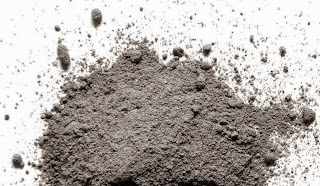The concrete is nowadays the most widely used material in the world, more than all other materials combined.
Concrete is a mixture precisely dosed cement, aggregates, water and admixtures which may vary depending on its uses.
Cement
The cement plays the role of binder of hydraulic concrete.The cement is composed of a mixture powder of lime and limestone clay that hardens with water. To make concrete or mortar, we use cement grey common said of Portland. It is generally sold in bags of 35 kg.
Concrete is a mixture precisely dosed cement, aggregates, water and admixtures which may vary depending on its uses.
Cement
The cement plays the role of binder of hydraulic concrete.The cement is composed of a mixture powder of lime and limestone clay that hardens with water. To make concrete or mortar, we use cement grey common said of Portland. It is generally sold in bags of 35 kg.
Sand
Generally used of river sand or quarry rid of the impurities, and never in the sea sand or sand backfill. These contain elements that are harmful to the quality of the concrete and mortar.
The dosages are given most of the time in the volume of sand sec.
Gravel The gravel is composed of particles rocky smooth when they are from a river (it is the gravel the more sought after) or crushed when they originate from a career. It is imperative that the gravel is rid of the mud and dirt that it may contain before producing the concrete.
There are different sizes of gravel. The larger calibers are generally used for foundations and walls.
The resistance of the concrete will be greater that you will mix different sizes of gravel
Water Just like the other components of the mixture, the water must be clean. The dosage should demonstrate a level of attention : too much water in the concrete leads to the birth of cracks and loss of strength at the time of drying.
The water mass make the concrete impervious to liquids, the coaches of the air will also make it insensitive to frost and products heated.
The association of cement-water generates reactions are extremely complex.
How to make concrete?
The proportions of the mixture (according to prescription or DTU)
For a bag of 35 kg of cement:
5 buckets of 10 liters of sand
8 buckets of 10 liters of gravel
Approximately 17 liters of water
Turn your mixer on.
For inside the gravel, half sand, and about half of the required amount of water.
When the gravel and sand are mixed and wetted Uniformly, add the cement.
Add A Few after-times the rest of the sand.
To gradually from the water, Taking Care not to add more than expected.
Let the blender run for A Few moments. The concrete shoulds-have a smooth, wet area and a bit oily.
Finally to the concrete in a wheelbarrow, buckets, or Directly on your book and use it quickly.
Orient the bowl of the mixer to the bottom to empty it of ict happy and wash with plenty of water.
Source: toutpourlebeton com
The dosages are given most of the time in the volume of sand sec.
Gravel The gravel is composed of particles rocky smooth when they are from a river (it is the gravel the more sought after) or crushed when they originate from a career. It is imperative that the gravel is rid of the mud and dirt that it may contain before producing the concrete.
There are different sizes of gravel. The larger calibers are generally used for foundations and walls.
The resistance of the concrete will be greater that you will mix different sizes of gravel
Water Just like the other components of the mixture, the water must be clean. The dosage should demonstrate a level of attention : too much water in the concrete leads to the birth of cracks and loss of strength at the time of drying.
Adjuvants
The adjuvants (additives) are embedded in the concrete in small quantities (less than 10 kg/m3).
The superplastifiants or fluidifiants have properties similar to those of water-reducing, but with an efficiency much more important. They allow fluidités extreme, useful to produce concrete autoplaçants, or autonivelants. (self-levelling floor screed...)
Other additives are used to change the outlet and the hardening as accelerators of jack, which allow décoffrer quickly, or, on the contrary retardants, used to maintain the workability of concrete
The water mass make the concrete impervious to liquids, the coaches of the air will also make it insensitive to frost and products heated.
The association of cement-water generates reactions are extremely complex.
Silicates and aluminates develop during the phase of hydration. They then form a crystalline gel, which marks the beginning of the phenomenon of “decision“.
During the hardening phase, which can last several months, the multiplication of micro-crystals to increase the mechanical strength : the concrete turns into a real rock composite.
p
















No comments:
Post a Comment